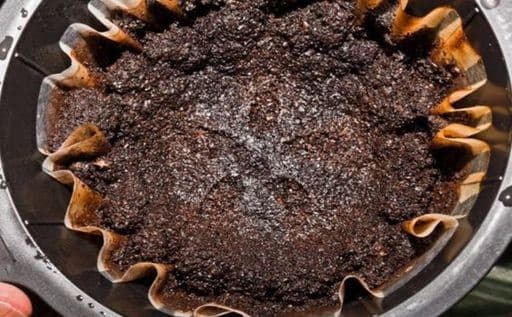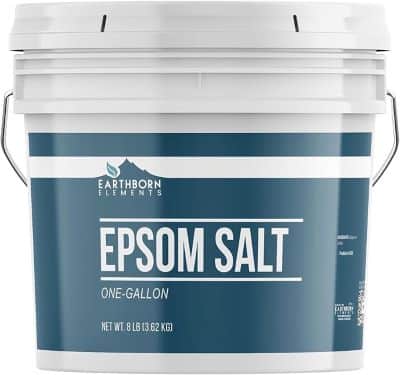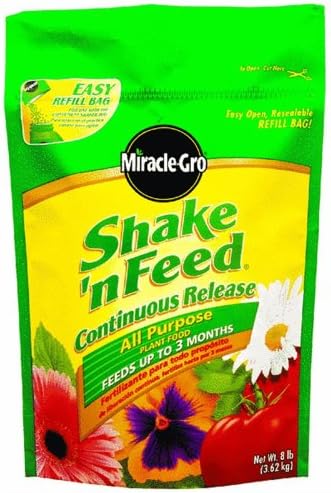Moringa plant grows in tropical areas, where the soil is very fertile and receives plenty of sunlight and warm temperatures. Moringa plant is known for its high nutritional and medicinal value; in fact, moringa is commonly grown for its leaves and seeds; these two parts are harvested and processed as herbal medication for different human ailments.
For the abundant production of moringa leaves and seeds, you need to apply the right fertilizers at the right time. Moringa tree grows well with fertilizers that contain nitrogen, phosphorus, and potassium as well as micronutrients like sulfur, iron, magnesium, calcium, and boron. Each nutrient plays a specific role in the growth of moringa. For instance, if your production goal is to produce moringa leaves only, you will apply fertilizers that are rich in nitrogen, like urea or NPK fertilizer with high nitrogen and phosphorus content.
Both organic and NPK fertilizers are good for moringa trees. I have prepared a list of high-quality fertilizers for moringa trees, 4 NPK fertilizers, and 5 Organic fertilizers; I further reveal the composition of each fertilizer, and the fertilizers can improve the health and productivity of moringa trees. This will help you make informed decisions when selecting the best fertilizer for your moringa trees.
NPK Fertilizers for Moringa Leaves
NPK fertilizers are termed balanced fertilizers because they contain the primary nutrients required for plant growth: nitrogen, phosphorus, and potassium. Top NPK fertilizers for Moringa trees are:
- FHG AGRIFORM 20-10-5 Tablets: Best fertilizer for high Moringa leaves production
- Nelson NutriStar 21-6-8 Granular Fertilizer: Best fertilizer for Moringa’s flowering and growth
- Florikan 16-5-11 NPK Timed Release Fertilizer: Best fertilizer for Moringa leaves and seed production
- Hi-Yield Blood Meal 12-0-0: Best fertilizer for moringa trees in pots
1. FHG AGRIFORM 20-10-5 Fertilizer Tablets
The FHG AGRIFORM 20-10-5 fertilizer tablet is an ideal plant food for moringa, vegetables, and other flowering plants. The AGRIFORM fertilizer tablet is a balanced fertilizer that contains nitrogen, phosphorus, and potassium at a 20-10-5 NPK ratio, alongside other micronutrients to support the healthy growth of various plant species. The AGRIFORM fertilizer tablet is a nitrogen-rich, slow-release fertilizer that supports the growth of the vegetative parts of plants; this fertilizer can rapidly boost the growth of moringa leaves when applied for up to 2 years.
Characteristics:
– Pre-measured tablets for uniform and adequate fertilization
- Safe, easy to handle, and convenient
– Suitable for use in containers, trees, shrubs, and ground covers
Formulation Details:
– 500 tablets x 21 gm
– Active Ingredients: Total Nitrogen – 20.00%, Available Phosphate – 10.00%, Soluble Potash – 5.00%, Calcium – 3.00%, Magnesium – 0.70%, Sulfur – 2.00%, Boron – 0.04%, Copper – 0.05%, Iron – 0.50%, Manganese – 0.07%, Zinc - 0.05%
Additional Information:
- Manufacturer: FHG
– Date First Available: May 8, 2018
– Not Discontinued By Manufacturer
Application Guide
Target Plants: The AGRIFORM fertilizer tablet is typically formulated for Moringa plants, vegetable crops, fruit trees, and shrubs.
Application Forms: Available in Slow-release Tablets
Application Rate: One AGRIFORM fertilizer tablet per moringa plant.
How to Apply: Place the AGRIFORM fertilizer tablet at the root zone of the moringa plant and cover with the topsoil. Water immediately after application to activate the fertilizer.
When to Apply: Apply the AGRIFORM fertilizer tablet at the beginning of planting moringa. It can feed the plant for up to 2 years.

2. Nelson NutriStar 21-6-8 Granular Fertilizer
Nelson’s NutriStar 21-6-8 fertilizer is a nitrogen-rich fertilizer suitable for trees, shrubs, and vegetable crops; it contains nitrogen, phosphorus, and potassium at a ratio of 21-6-8, alongside other micronutrients such as iron, sulfur, magnesium, calcium, zinc, copper, and manganese. Nelson’s NutriStar fertilizer is ideal for moringa plants because of its high nitrogen content; this fertilizer will greatly promote the rapid growth of moringa leaves and overall health of the tree. If your production goal is to produce the moringa leaves, I recommend you consider Nelson’s NutriStar fertilizer.
Characteristics:
– Formulated for trees, shrubs, and evergreens
– Contains 5 sources of nitrogen for sustained growth
– Includes essential nutrients nitrogen (21%), phosphate (6%), and soluble potash (8%)
– Promotes lush green foliage growth
– Provides immediate results and lasting benefits
– Trusted by landscapers for over 30 years
Formulation Details:
– Contains ureaform, monoammonium phosphate, polymer-coated urea, activated sludge, sulfur, potassium nitrate, ferrous sulfate, magnesium sulfate, calcium sulfate, sulfur, zinc sulfate, manganese sulfate, copper sulfate, and potassium sulfate
– Date First Available: December 3, 2010
– Manufacturer: Nelson Plant Food
– ASIN: B004F1RKEY
Additional Information:
– Suitable for in-ground and container-grown trees, shrubs, and evergreens
– Apply every 30 days during the growing season
– Positive customer feedback on quality, ease of application, and effectiveness
Application Guide
Target Plants: Recommended for a variety of plants, including moringa, oaks, willows, ashes, maples, pines, mulberries, yaupons, hollies, oleanders, viburnums, boxwoods, cleyeras, spireas, ground covers, nandinas, and loropetalums
Application Forms: The Nelson’s NutriStar fertilizer is available in granules.
Application Rate: 1 tablespoon of Nelson’s NutriStar fertilizer per moringa tree or 1/2 cup of Nelson’s NutriStar fertilizer per 10 square feet of surface area.
How to Apply: Make a hole of at least 6 inches deep close to the root zone of the moringa plant and place 1 tablespoon of Nelson’s NutriStar fertilizer in the hole, cover up and water immediately. Alternatively, you can evenly spread or broadcast half a cup of Nelson’s NutriStar fertilizer per 10 square feet of the planting area.
When to Apply: Apply Nelson’s NutriStar fertilizer twice per year, in early spring when the moringa plant is about to resume active growth, and in early fall when the moringa plant sheds its leaves.

3. Florikan 16-5-11 NPK Timed Release Fertilizer
Florikan 16-5-11 NPK Fertilizer is a balanced fertilizer that contains nitrogen, phosphorus, and potassium, alongside other micronutrients like magnesium, sulfur, iron, copper, zinc, and urea. Florikan NPK Fertilizer contains high nitrogen and potassium, these nutrients are exceptionally helpful to moringa plants in terms of blooming production of leaves and seed production. The Florikan NPK Fertilizer is time-released, meaning it decomposes slowly for a long time while feeding the moringa plants steady nutrients required for vibrant leaf production.
Characteristics:
– Controlled-release fertilizer
– Strong on nitrogen and potassium
– Classic 3:1:2 ratio
– Ideal for heavy feeding plants
– Can be used with any plant needing macro nutrients or quick green up
– Used in commercial greenhouses for decades
– Lasts up to 180 days
– Contains essential micronutrients
Formulation Details:
– Total Nitrogen (N) 16%
– Phosphate (P2O5) 5%
– Soluble Potash (K2O) 11%
– Magnesium (Mg) 1.20%
– Sulfur (S) 6.40%
– Copper (Cu) 0.05%
– Iron (Fe) 0.89%
– Manganese (Mn) 0.11%
– Zinc (Zn) 0.05%
– 100% Urea Free blend
Additional Information:
- Sprinkle on top of potting medium
– Proven to produce outstanding results
Application Guide
Target Plants: Suitable for all plants, including Moringa, Anthuriums, Philodendron, Ficus, Bromeliads, Palms, Bonsai, Orchids, Calathea, Alocasia, and more.
Application Forms: Available in granules.
Application Rate: 1 tablespoon of Florikan NPK Fertilizer per moringa plant.
How to Apply: Evenly spread the fertilizer at the root zone of the moringa plant, incorporate lightly into the soil, and water immediately after application. Alternatively, you can make a hole about 6 inches deep around the root zone of the moringa plant, and pour the fertilizer therein. Cover up the holes and water immediately after application.
When to Apply: Apply the Florikan NPK Fertilizer every 6 months throughout the growing cycle of the moringa plant.
4. Hi-Yield Blood Meal 12-0-0
The Hi-Yield Blood Meal 12-0-0 is a high-quality organic fertilizer with a nitrogen content of 12%. The Hi-Yield Blood Meal is ideal for moringa plants and other flowering shrubs. It is a slow-release fertilizer, it decomposes slowly to steadily release nitrogen for long-term use by the moringa plant. Hi-Yield Blood Meal is safe for regular application on moringa without any fear of damaging the plant roots or leaching into the soil over time.
Characteristics:
– Slow-release form of natural Nitrogen
– Aids in plant production of top growth and deep green foliage
– Can be used on Pansies, Roses, flowers, trees, shrubs, and vegetables
- Contains 12% Nitrogen
Formulation Details:
– 8 lb. bag of 12-0-0 fertilizer
– Application varies by plant type and size
– Manufacturer: Hi-Yield
- Date First Available: January 30, 2013
Application Guide
Target Plants: The Hi-Yield Blood Meal is typically formulated for all plant species, including flowering plants like moringa, vegetable crops, fruit trees like apple and citrus, and lawn grasses.
Application Forms: Available in granules.
Application Rate: 1/4 cup per moringa plant.
How to Apply: Spread the Hi-Yield Blood Meal evenly at the root zone of the moringa plant and lightly incorporate into the soil. Water immediately after application.
When to Apply: Apply the Hi-Yield Blood Meal every 4 months throughout the growing cycle of the moringa plant.
Organic Fertilizers For Moringa Trees
Moringa plants also grow well when organic fertilizers. Aside from the provision of nutrients, organic fertilizers help improve the soil structure by increasing the activities of beneficial soil microorganisms, improving the soil structure for proper drainage and aeration to create a perfect growing condition for moringa plants. Top organic fertilizers for moringa trees are:
- Poultry manure: Best organic fertilizer for moringa trees
- Coffee Grounds: Efficient, cheap, sustainable fertilizer
- Epsom Salt: Natural supplement for moringa trees
- Green Sand: Beneficial Minerals for Moringa Growth
- Bone Meal: Suitable for Moringa Seedlings with Weak Stems
1. Poultry Manure
Poultry manure is the best organic fertilizer for moringa trees. Poultry manure is highly rich in nitrogen, phosphorus, and potassium, alongside calcium, magnesium, and sulfur. You know why? It is because chickens are fed highly nutritious chicken feeds that are formulated for specific functions, the waste is also as rich as the feed.
Aside from supplying required nutrients for moringa tree growth, poultry manure creates favorable soil conditions for the moringa tree by improving the soil structure, retaining more moisture, and facilitating better aeration of the soil.
How and When to Apply: Incorporate poultry aged manure into the soil during land preparation, before planting moringa seeds or seedlings. Do not apply fresh poultry manure to moringa, it is acidic and can burn the moringa plant roots. Apply aged poultry manure once per year during spring.

2. Coffee Grounds
Coffee grounds are good fertilizer moringa plant. Coffee grounds contain nitrogen, potassium, phosphorus, magnesium, calcium, and sulfur; these nutrients are essential for the health and growth of moringa trees. Coffee grounds are a natural and slow-release fertilizer, they can slowly decompose and release nutrients for a very long time.
How and When to Apply: Incorporate coffee grounds into the soil during land preparation, before planting moringa trees. Alternatively, you can apply coffee grounds as topdressing by depositing the coffee grounds at the base of the moringa tree. Coffee grounds are safe for the moringa tree, they will not burn the tree roots or other parts. Apply coffee grounds to moringa trees every 4 months.

3. Epsom Salt
Epsom salt is an effective organic fertilizer for moringa trees. Epsom salt is also known as magnesium sulfate; it is a natural source of magnesium and sulfur. These nutrients are needed for effective photosynthesis to take place. Moringa plant requires Epsom salt for the supply of these nutrients for increased photosynthetic actions and production of leaves and seeds.
Aside from improving Moringa growth, Epsom salt has proven its effectiveness in boosting productivity and growth for many other plants like tomatoes, roses, mangoes, etc. It is also used to increase the yield of cereals such as wheat, barley, and oats by improving their ability to absorb water through their roots.
How to Apply: Apply Epsom salt at the root zone of the moringa tree and incorporate it slightly into the soil. Water immediately after application. Alternatively, you can dilute the Epsom salt into water and apply to the moringa tree as a foliar and root feed. Apply Epsom salt to the moringa tree twice per year, during spring and fall.
4. Green Sand
Green sands are beneficial to moringa plants because they contain high levels of calcium carbonate (CaCO3), which can help correct mineral deficiencies in the soil. Green sand is produced from the ground-up shells of marine creatures, such as oysters, clams, and snails. The shells are crushed into a fine powder and mixed with other minerals to create a balanced fertilizer for moringa plants. Greensand has trace amounts of nitrogen, potassium, magnesium, and many micronutrients that promote healthy moringa plant growth.
How to Apply: Add green sand to the soil around the plant root zone of the moringa tree. Water immediately after application. Apply greensand to the moringa tree during early spring and fall.
5. Bone Meal
Bone meal is a natural, slow-release fertilizer for moringa trees that contains calcium, phosphorus, and other nutrients. Bone meal is beneficial for moringa seedlings with weak stems or when moringa plants need extra phosphorus. This is because bone meal provides these nutrients in smaller quantities than other fertilizers do.
How to Apply: Apply bone meal at the beginning of planting moringa seedlings by incorporating the soil. Water immediately after application. Apply bone meal to moringa in early spring during active growth and fall.

Signs of Nutrient Deficiency In Moringa Plants
Poor yielding moringa plant is primarily a result of a deficiency of nutrients or under-fertilizing of moringa plants. You will observe the following signs when your moringa plants are experiencing nutrient deficiency:
- Stunted growth is the most common result of under-fertilizing, but yellow leaves are another telltale sign. Moringa trees that are not getting enough nutrients will naturally produce less chlorophyll and thus have pale, yellowish leaves rather than deep green ones.
- Poor yield is also a common problem with under-fertilization, especially for newer plants that have had their roots disturbed by transplantation or other cultivation practices.
- The low nutritional value of moringa leaf powder can be attributed to anything from poor soil composition to improper nutrient uptake on account of insufficient fertilizer intake.
- Weak stems may also signal insufficient fertilizer intake in some cases, especially if they become droopy or brittle over time instead of as strong and sturdy as they should be.
In summary,
Fertilizers are the secret to fast growth and high yield of moringa leaves and seeds. The best time to apply fertilizer to moringa is during spring when moringa is actively growing. Ensure you apply these fertilizers during the cool part of the day, usually very early in the morning or late in the evening. Also, water the plant after fertilizer is applied; this helps the fertilizer to dissolve and aid translocation to the moringa plant parts. Proper application methods, the right dosage of fertilizers, and the best time of application can help these fertilizers deliver the required nutrients to make the moringa plant grow fast and yield to its genetic potential.
